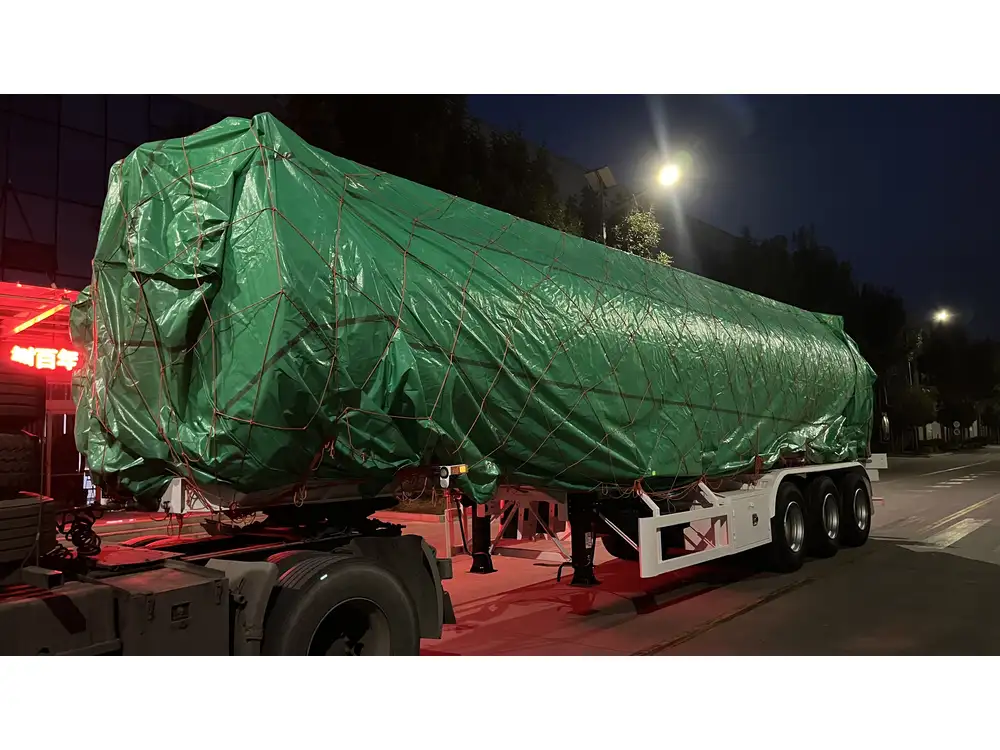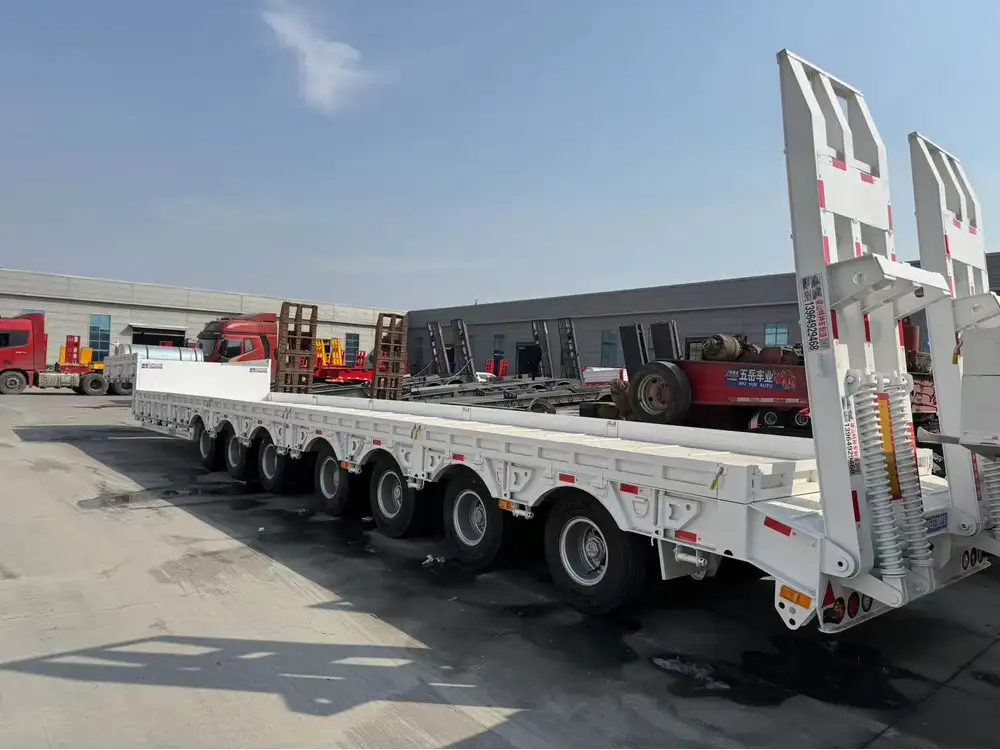Whether you’re a fleet manager, a logistics coordinator, or just someone interested in the transportation industry, understanding the dimensions of semi-trailers—particularly their width—is crucial. This article delves into the intricacies of semi-trailer widths, covering everything from standard measurements to variations based on trailer types, regulations, and loading considerations. If you’ve ever pondered “how wide is a semi-trailer?” or faced challenges in navigating roadways and facilities with such vehicles, you’re in the right place.
Standard Semi-Trailer Widths
North American Standards
In North America, the Federal Highway Administration (FHWA) sets regulations that govern the dimensions of commercial vehicles. According to these regulations:
Maximum Width: The standard width of a semi-trailer is 102 inches (8.5 feet). This width is widely accepted for commercial vehicles, ensuring compliance with federal laws across different states, which is critical for legal hauling.
Typical Widths by Trailer Type:
- Flatbeds: Generally 102 inches.
- Dry Vans: Typically around 102 inches.
- Refrigerated Trailers: These often adhere to the standard of 102 inches, though specialized models may vary.
- Tanker Trailers: Usually, they don’t exceed the 102-inch limit unless specific cargo requirements necessitate a wider configuration.

International Standards
In other regions, particularly in Europe, the regulations differ slightly:
Maximum Width: The width caps at 250 cm (approximately 98.4 inches) for many countries under European Union regulations.
Understanding Variance: Countries may implement narrower restrictions or allow broader dimensions for specific vehicle types or operational scenarios.
Table 1: Comparison of Semi-Trailer Widths by Region
| Region | Standard Maximum Width | Trailer Types |
|---|---|---|
| North America | 102 inches (8.5 feet) | Flatbeds, Dry Vans, Reefers |
| Europe | 250 cm (98.4 inches) | Flatbeds, Box Trailers, Reefers |
| Australia | 2.5 meters (98.4 inches) | General freight, specialized units |
Impact of Width on Operations

Clearance and Limitations
Width plays a pivotal role in various operational scenarios, particularly when accessing narrower roads or tight spaces.
- Navigational Challenges: Wider trailers may face difficulties in turning corners, especially in urban environments with limited street layouts.
- Loading Dock Access: Many loading docks are designed for standard trailer widths; if your semi-trailer exceeds this, loading may become impractical or impossible.
- Bridge and Tunnel Restrictions: Certain structures have specific width limitations, impacting route planning for broader trailers.
Compliance with Regulations
Being mindful of width regulations is paramount for ensuring road safety and legal compliance. In North America, operating a trailer exceeding 102 inches generally requires special permits, often leading to:
- Increased Costs: Permit fees, potential route restrictions, and other financial implications.
- Inspection Schedules: More stringent safety checks due to the larger size.
Width-Specific Trailer Types and Their Applications
Various trailer types are specifically designed to meet certain needs, influenced not just by width but also by the cargo they are intended to transport.

Flatbed Trailers
Flatbed trailers, routinely utilized for transporting heavy machinery and other oversized loads, usually stick to the 102-inch width. Their design facilitates:
- Easy Loading and Unloading: With no sides or roof, flatbeds allow for loads to be lifted on and off from any angle.
- Versatility: These trailers can accommodate a wide range of materials, often including those that exceed standard dimensions.
Refrigerated Trailers (Reefers)
Reefers, essential for transporting perishable goods, also adhere to the standard width. Key considerations include:
- Double Doors: Most units come equipped with dual rear doors that facilitate easy access, crucial for operations in fast-paced environments like grocery distribution.
- Temperature Control: Width should accommodate cooling equipment without compromising overall efficiency.
Tanker Trailers
Tanker trailers, primarily used for transporting liquid cargo, not only follow width regulations but also must ensure stability due to the liquid’s movement. Important features include:
- Compartmentalization: Tankers are often designed with internal compartments to manage sloshing that could affect control.
- Specialized Construction: Wider designs may necessitate advanced engineering to maintain structural integrity and safety.

Evaluating the Necessity for Wider Trailers
In certain scenarios, the need for a wider trailer may arise, leading to additional complexities, including heightened costs and logistical challenges.
Specialized Shipments
Certain cargo types may necessitate wider dimensions:
- Oversized Equipment: Construction machinery may occasionally be wider than standard trailers.
- Bulk Commodities: Loads like hay bales or heavy rolls of wire may require special consideration in width.
Possible Alternatives
If broader trailers become essential, consider these alternatives:
- Dedicated Routes: Some companies operate specific vessels or appliances to manage width limitations effectively.
- Intermodal Solutions: Combining rail and truck transport may mitigate width concerns, allowing for greater flexibility in logistics.

Managing Legal and Insurance Considerations
Organizations must be conscious of varying regulations and insurance implications concerning trailer widths. Key points include:
- Legal Liabilities: Every state and country has distinct laws guiding semi-trailer operations, warranting continuous diligence.
- Insurance Requirements: Wider trailers may bestow additional risk profiles, influencing insurance premium costs.
Consulting Local Laws
Before traversing different jurisdictions, fleet operators should consult local transport authorities or legal experts to ensure compliance. Understanding these requirements can serve as a preventative measure against fines or legal complications.
Conclusion
Navigating the complexities of semi-trailer widths involves a comprehensive understanding of various regulations, operational implications, and the necessity for specific trailer types. With North American standards firmly set at 102 inches, it’s crucial to align your operational practices in accordance with these dimensions, considering regional variations when needed.
As challenges arise—whether in maneuverability, legal compliance, or cargo-specific demands—fleet operators, logistics coordinators, and transport stakeholders must remain acutely aware and adaptable. Prioritizing compliance, safety, and efficiency will yield benefits beyond mere adherence to width regulations; it will enhance overall operational effectiveness in an increasingly competitive transport environment.
Investing in knowledge about semi-trailer dimensions empowers stakeholders to improve their logistics operations, minimize costs, and optimize transportation strategies. This understanding is crucial for navigating the complexities inherent in the transport industry, providing an edge in today’s fast-paced world.



